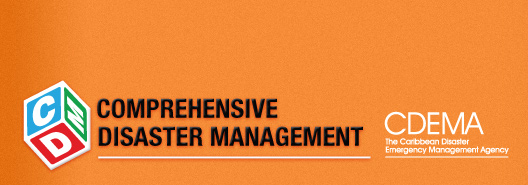|
Why should you prepare?
Having to take all of this time, money and energy to make a disaster plan – for something that may never even happen – may seem foolish. Many of us have never experienced a disaster in our lifetime. You may ask yourself, ‘why should I spend so much preparing for something that won’t happen?’
There are many examples throughout history of why you should.
- When Hurricane Janet hit Barbados in 1955, it was the first hurricane to touch the island in 57 years. Janet had winds of 125 miles per hour, killed 33 people and left thousands homeless.
- St. Kitts and Nevis was in the process of building a new cruise ship port called Port Zante. Consultants working on it said that the area was only likely to experience very high waves every 50 years, on average. Developers had to decide if they wanted to spend as much as $5 million to prepare for a rare disaster or if they should leave it to chance? They decided not to spend the money.
- In September 1998, Hurricane Georges damaged Port Zante. The damage was estimated to have cost US$10.1 million. What made it worse was that the insurance pay out and money lost from business interruption added up to US$8.1 million.
- They began construction again, but had to be stopped by Hurricane Lenny. Damage from that hurricane added up to US$25.7 million. In all the total cost of the construction and reconstruction added up to US$32.9 million.
- Before the Haitian earthquake in January 2010, the last major earthquake to hit that island had been in 1842.
- Jamaica’s Norman Manley Law School was built in 1975. The Jamaican government paid for the construction which cost US$685,000. No instructions had been given to ensure that the building was prepared for hazards and in 1988 when Hurricane Gilbert passed the roof was very badly damaged. The cost to repair this roof was US$90,000.
Are you still unconvinced about spending money on mitigation? If you own a home or a business, the questions below can help you decide whether or not you need to:
- What hazards are likely to impact my property?
- How often are these hazards likely to have an impact?
- Should I invest money now, or take a chance?
- I am likely to be affected by a hazard, is my property constructed properly?
- Even with insurance, can I afford the inconvenience of moving and starting over?
Do I need Insurance?
Although we live in a high risk area, many of us still don’t take out insurance policies on our homes and businesses. We say that it’s too expensive or that it’s not worth it – but, are those things true? Here are some steps you can take if you’re trying to decide if buying insurance is a good idea.
- Learn about your insurance policy
- Talk with your insurance agent so that you can know what disasters you’re covered for and which ones you aren’t. Do you need extra coverage because of where you live? Is everything on your property covered?
- Will the government help you after a disaster?
- Many people think that if their property is damaged during a disaster, the government will give them money to rebuild. However, whether or not you get any money from the government depends on the extent of the damage. Always remember there may be persons who are worse off than you – they’ll get any money first. Also, how long will it take for the government to help you? It could be weeks or months or even years.
- Can you rebuild your house out of pocket?
- A broken window or a new roof may not seem like much but you need to think about the worst case scenario as well. What if your entire house was destroyed? Could you afford to rebuild it? You really need to sit and think about all the potential costs.
back to top
|












